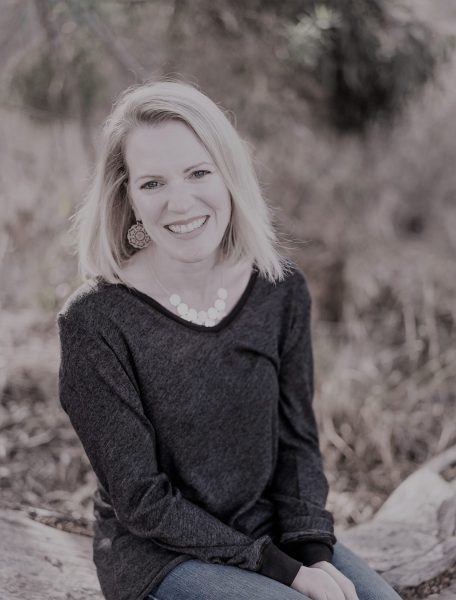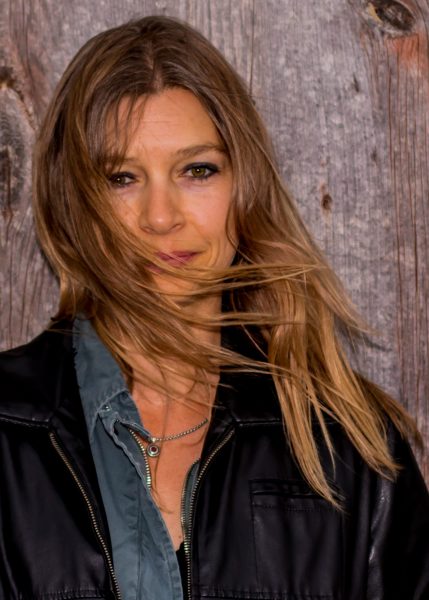 Jennifer Genest grew up riding horses and playing in the woods of Sanford, a mill town in southern Maine. She now lives near Los Angeles. Her fiction has appeared in New Delta Review, Post Road Magazine, Pithead Chapel, and elsewhere. Her essay “The Mills” was published in the summer issue of Colorado Review. Associate editor JV Genova reached out to Genest to talk more about her process, fear, and writing while parenting.
Jennifer Genest grew up riding horses and playing in the woods of Sanford, a mill town in southern Maine. She now lives near Los Angeles. Her fiction has appeared in New Delta Review, Post Road Magazine, Pithead Chapel, and elsewhere. Her essay “The Mills” was published in the summer issue of Colorado Review. Associate editor JV Genova reached out to Genest to talk more about her process, fear, and writing while parenting.
JV Genova: There is a moment in “The Mills” when the narrator is saying goodbye to her young daughter before school. You write that the speaker makes note of what her child is wearing, memorizing it: “I do it automatically, without saying this: in case. In case, for whatever reason, I need to describe the last time I saw her.” This is so striking to me, because I do the same thing! I understand this essay to be—in part—about grappling with anxiety and fear, both as a child and later as an adult, but particularly as a mother. Can you speak to fear as a catalyst for your work, or how you write through fear?
Jennifer Genest: I’m glad I am not the only parent feeling that way! You know, I avoided writing about many of the things in this essay for a long time; I feared feeling the feelings. I realize now that once we have the idea to write something uncomfortable, we are already feeling it. I think good stuff has only ever come from sitting with discomfort. This isn’t exactly news to most people, but it took me a while to realize that for myself.
As a child, it was scary to think about another child facing harm, but it’s scary in a different way to think about it as a parent. I feared writing about the death of someone else’s child and whether I had the right to do that. Ultimately, though, I saw that Wade’s and Gycelle’s stories were somehow woven into mine; in sharing it, I hope their memory is written about with the compassion, love, and dignity they both deserve.
JVG: I’m struck by how beautifully you’ve rendered children on the page: the narrator as a girl, the narrator’s own daughters. As writers and readers, we often ask ourselves: why this story now? In that spirit, why this story now?
JG: Thank you for that.
I have needed to tell this story for a long time; it has been sprinkled throughout my fiction for years. I had a lot of shame around my mental health as a child, a teen, and even as an adult. I still work at letting the child me be who she was; perhaps writing this story now was a way to feel all those things again but with the adult perspective to grant myself some grace.
Also, when I began to write this essay, my oldest daughter was approaching age twelve—an age when children can develop a more adult understanding of death. Gycelle Cote was twelve when she died, and I was almost twelve then, too. For whatever reason—subconscious or not, coincidental or not—this story/these stories happened to surface and merge now.
JVG: What was your process in writing “The Mills”? What is your writing process generally? Some writers have quirky habits—do you have any you’re willing to share?
JG: I think every writer has a story they keep writing despite every effort to tell something different; “The Mills” is mine. I sat to write one day, and the image of the mills on fire came up, and I just let it pull me. My writing group was instrumental in helping me shape it—I shared the essay twice with the group, worked with an editor friend on it, and then began submitting it.
In general, I’m inspired to write by things I don’t expect; I had an idea for a story from watching a Lincoln commercial starring Matthew McConaughey—but the story didn’t end up being what I thought it would be; I love it when the writing process surprises me like that. Pre-pandemic times, I would usually write a big chunk of something at once, share it with my writing group, and then try to finish it by the next time we met. I normally write very, very slowly.
I wish I had something quirky to share in terms of writing rituals, but I think I’m like a lot of writers—I’m scattered, I write best in the morning, and I need caffeine/strong tea. I like everything—even grocery lists—to be in Times New Roman, 12-point, double spaced.
JVG: What have you read lately that you found inspiring or thought provoking?
JG: I have had such a hard time with focus lately and haven’t read very much. Some of my favorite writers include Jesmyn Ward, Min Jin Lee, Roxane Gay, and Jennifer Egan. I really admire Elizabeth Strout’s writing; her (Maine) characters feel like home to me.
A while back, I read Kevin Wilson’s Nothing to See Here, about kids who spontaneously combust, told from the point of view of their nanny, who must extinguish them and keep them safe. It was a fun story that surprised me in its layers and reminded me to take risks and just go for it. I admire writers who play with form a bit, or have an element of strangeness, or just offer beautiful sentences. I recently read the debut novel Sybelia Drive, by my friend Karin Cecile Davidson, and was taken by her acute sense of place, and her ability to create an organic cast of characters from within it.
I am also continually inspired by what other writers in my community share with me. It’s such a pleasure to read or edit a friend’s story, and then to see the piece find its publishing home.
JVG: “The Mills” is a braided essay, with three sections. Did you set out to write a braided essay, or did it form as you drafted? Did you find yourself moving the braids around with each draft?
JG: I had wanted to write a braided essay for some time but wasn’t sure I had the right strands. Two braided essays I admire are Jo Ann Beard’s “The Fourth State of Matter” (first published in the New Yorker), and Lidia Yuknavich’s “Woven” (first published in Guernica). I was impressed by the building of each thread until they merged just so. I was also impressed by how fearlessly both writers tell their truth, but in different ways.
The first draft of “The Mills” had the same first line about the fires, which, when I drilled into memory, gave me three strands without much effort. I did move the braid strands slightly (and removed a strand section that wasn’t functioning); Stephanie G’Schwind was so helpful in guiding me to tighten the essay considerably; I’m grateful for her willingness to spend time with me on that. [Editor’s note: Stephanie G’Schwind would like to give credit to CR associate editor Evan Senie, with whom she worked very closely on the essay.]
JVG: Writing as a parent—particularly during a pandemic—can be challenging, to say the least. “The Mills” was clearly inspired, at least in part, by your having young daughters. Can you speak to the challenges and rewards of writing as a parent?
JG: 2020 has not been a writing season for me; this has been hard to accept. My family faced some sad months, but thankfully we are all healthy. My priorities right now are quality sleep, (somewhat?) successful learning from home, staying healthy, and trying to maintain some semblance of a normal routine for my kids. I have a large project I’m supposed to be editing, and a story I started pre-pandemic that needs finishing, but at the end of each day, I’m just—spent.
In general, though, my kids inform and enrich my writing, too, in unexpected ways. Before becoming a parent, I think I easily underestimated children—on the page and off. I’m more careful now.
When the pandemic is over, I do not expect to have generated many pages, but I hope to have a family who has remained healthy, and kids who have come out of it more resilient. Hopefully, when it is over, they’ll see their mom sitting in the dark one morning, on her second cup of strong tea, adding a page to a new story before they all have breakfast and walk to school. Maybe seeing mom do that again will be just as good for them as it will be for me.

JV Genova is an MFA candidate in nonfiction at Colorado State University and an associate editor for Colorado Review. When she isn’t writing, she dabbles in photography and grows potatoes. She cannot believe she is someone’s mother.